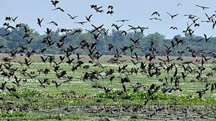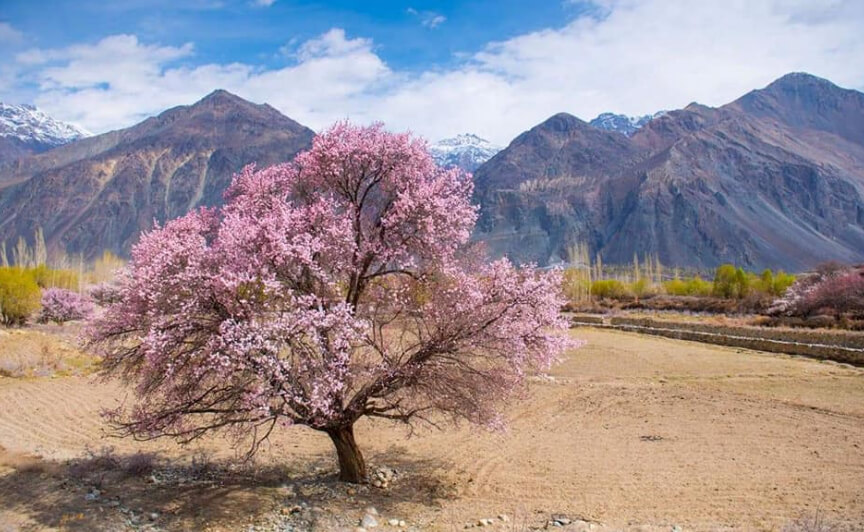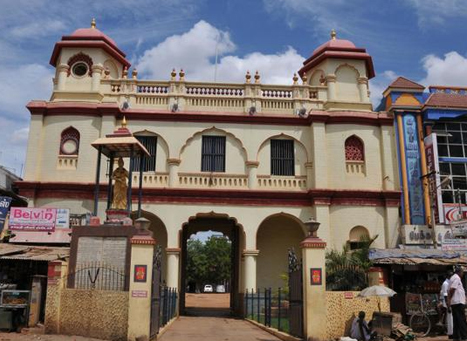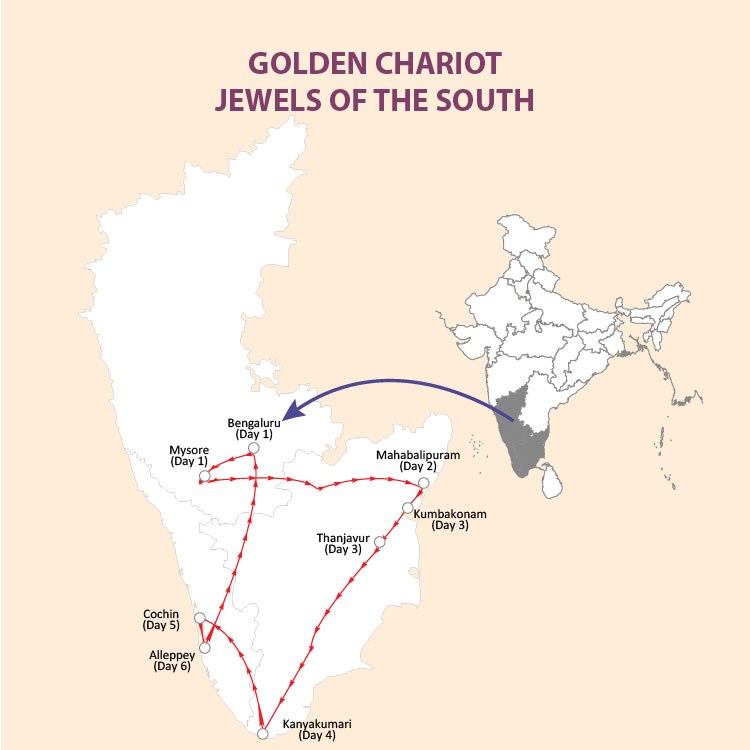Winter migratory birds are crucial to Bhitarkanika’s ecosystem. Sadly, their numbers are falling.
Bhitarkanika, a beautiful wildlife sanctuary in India, is famous for its rich biodiversity. Every winter, it welcomes thousands of migratory birds from distant lands. These birds travel long distances to escape the harsh winters of their native regions. But recent reports show a worrying trend.
The number of these winter visitors is decreasing. This decline raises concerns about the health of the sanctuary and its environment. Factors like climate change, habitat loss, and pollution play a role. Understanding this issue is vital for preserving Bhitarkanika’s unique wildlife and natural beauty. Dive in to learn more about the challenges and solutions for this pressing problem.
Alarming Decline In Bird Population
The alarming decline in bird population at Bhitarkanika has raised concerns among nature enthusiasts and conservationists. Once a thriving sanctuary for winter migratory birds, Bhitarkanika is now witnessing a significant drop in bird numbers. What does this mean for the ecosystem? Why are these changes happening? Let’s delve into the current statistics and historical comparisons to understand this pressing issue.
Current Statistics
Recent surveys at Bhitarkanika indicate a sharp drop in bird population. Experts recorded fewer than 10,000 migratory birds this winter. This contrasts starkly with previous counts. Last year, the numbers were nearly double. Species such as the Eurasian Wigeon and Northern Pintail are showing noticeable declines. The reasons vary from habitat loss to climate changes. Immediate actions are required to address these issues.
Historical Comparison
Historically, Bhitarkanika has been a haven for migratory birds. Data from the past ten years shows a steady presence of over 20,000 birds each winter. This rich biodiversity attracted birdwatchers and researchers alike. Sadly, the recent figures are alarming. Comparing current statistics with historical data highlights a worrying trend. Loss of wetlands and increased human activity are major contributors. The decline impacts the entire ecosystem. Urgent efforts are needed to restore Bhitarkanika’s bird population.
Factors Contributing To Decline
Winter migratory birds have long graced the serene wetlands of Bhitarkanika, a haven for bird watchers and nature enthusiasts. However, recent trends show a troubling decline in their numbers. Let’s delve into the factors contributing to this decline and understand what’s at stake.
Climate Change Impact
Climate change is altering weather patterns globally, and Bhitarkanika is no exception. Warmer winters and unpredictable weather can disrupt the migratory patterns of birds. Birds that traditionally traveled to Bhitarkanika might now find the conditions less favorable for nesting and feeding. This change can lead to fewer birds making the journey.
Think about it: if the environment is changing rapidly, birds may struggle to adapt quickly enough. Have you ever tried to plan a trip, only to cancel because the weather was unpredictable? Birds face similar challenges, but with far-reaching implications for their survival.
Habitat Loss
Another significant factor is habitat loss. Wetlands, forests, and other natural habitats are being encroached upon for development and agriculture. When these areas are destroyed or degraded, the birds lose their resting and breeding grounds.
Imagine visiting your favorite park only to find it turned into a parking lot. You’d lose a place of relaxation and peace. Birds experience this on a much larger scale, leading to decreased populations. Protecting these natural habitats is crucial for their survival.
So, what can you do to help? Supporting conservation efforts and staying informed about local environmental issues can make a difference. Each small action contributes to a larger impact. Can we really afford to lose the beauty and biodiversity that migratory birds bring to places like Bhitarkanika?
Bhitarkanika National Park Overview
Bhitarkanika National Park is a hidden gem in Odisha, India. Known for its unique biodiversity, the park attracts nature lovers. Winter migratory birds flock to this sanctuary every year. But recent reports show a dip in their population. This is concerning for bird watchers and environmentalists.
Geographical Features
Bhitarkanika spans over 672 square kilometers. The park includes mangroves, swamps, and rivers. The Brahmani, Baitarani, and Dhamra rivers enrich its ecosystem. These rivers create a lush environment. You will also find tidal creeks and estuaries here. The rich soil supports diverse plant life. The varied landscape is ideal for many species.
Importance For Migratory Birds
Every winter, Bhitarkanika becomes a bird paradise. Birds migrate from as far as Siberia and Central Asia. They escape harsh winters and find refuge here. The park offers a safe habitat with abundant food. Wetlands and water bodies are crucial for these birds. They breed, feed, and roost in peace.
Birds like the Northern Pintail and Gadwall are common. The park also hosts rare species. The sight of flocks is mesmerizing. This annual migration adds to the park’s charm. But the recent dip in bird numbers is alarming. It signals possible ecological issues.

Credit: roundglasssustain.com
Species Most Affected
As winter sets in, Bhitarkanika National Park in India becomes a temporary home to numerous migratory birds. However, recent observations have shown a troubling decline in some species’ populations. This section will focus on the species most affected by this decline, providing insights and raising awareness about their plight.
Endangered Birds
Endangered birds are the first to suffer from these population dips. The Lesser Adjutant Stork, for example, has seen a significant drop in numbers. You may have seen their distinctive figures wading through wetlands during past seasons, but now, their presence is alarmingly scarce.
Similarly, the Black-crowned Night Heron, another endangered species, is becoming harder to spot. These birds play crucial roles in their ecosystems, and their dwindling numbers could have far-reaching consequences. Have you ever wondered what happens when these key species disappear? The entire food chain is disrupted.
Commonly Found Species
Even commonly found species are not immune to these changes. The Great Egret, which many of you might recognize with its elegant white plumage, has also experienced population dips. This bird, often seen perched gracefully by water bodies, is now a less frequent sight.
The Northern Pintail, a regular winter visitor, is facing similar challenges. This duck species, usually seen in large flocks, is now appearing in smaller groups. What does this tell us about the state of our wetlands and natural reserves?
These observations are not just about numbers. They reflect the health of our environment. Every time you visit Bhitarkanika and notice fewer birds, it’s a sign that something is amiss. How can we ensure these beautiful creatures continue to thrive in their winter haven?
By understanding the specific species most affected, we can take targeted actions to protect them. Have you ever participated in a bird-watching event or conservation project? Your involvement can make a difference. Let’s work together to ensure that future generations can enjoy the sight of these magnificent birds.
Conservation Efforts
Winter migratory birds visiting Bhitarkanika National Park have seen a troubling dip in their population. This change is alarming, considering Bhitarkanika is known for its rich biodiversity and serves as a crucial stopover for many migratory birds. Conservation efforts are now more critical than ever to safeguard these magnificent creatures. So, what steps are being taken? Let’s dive into the initiatives driven by the government and various NGOs to protect and preserve the migratory bird population in Bhitarkanika.
Government Initiatives
The government has been proactive in addressing the decline in migratory bird populations. One notable step is the implementation of stricter anti-poaching laws. These laws are enforced rigorously to protect the birds from illegal hunting and capture. Additionally, the Forest Department has ramped up patrols and surveillance within the park to ensure these laws are followed.
Another significant initiative is habitat restoration. The government has undertaken projects to restore and maintain the wetlands, which are essential for migratory birds. Wetlands provide food, shelter, and breeding grounds for these birds, and their restoration is vital for sustaining the bird population.
Educational programs are also being conducted to raise awareness among local communities. These programs aim to educate residents about the importance of migratory birds and the role they play in the ecosystem. By involving the community, the government hopes to foster a sense of responsibility and encourage local support for conservation efforts.
Ngo Involvement
Non-Governmental Organizations (NGOs) are also playing a crucial role in the conservation of migratory birds in Bhitarkanika. These organizations bring in expertise, resources, and innovative approaches to conservation that complement government efforts.
Many NGOs are involved in detailed research and monitoring of bird populations. This research provides valuable data that helps in understanding migration patterns, the impact of climate change, and other factors affecting bird populations. For example, NGOs conduct bird banding and tracking projects to gather precise data on migratory routes and stopover points.
Community engagement is another area where NGOs excel. They work closely with local communities to promote sustainable practices that are beneficial to both humans and wildlife. By organizing workshops, clean-up drives, and eco-tourism initiatives, NGOs help to create a more bird-friendly environment.
Furthermore, NGOs often collaborate with international organizations to bring global attention to local issues. This collaboration can lead to increased funding, advanced technology, and broader support for conservation projects.
Have you ever considered how your actions could support these efforts? Simple steps like reducing plastic use, supporting eco-friendly products, and spreading awareness can make a significant difference. The next time you visit a national park, remember that your behavior can impact the delicate balance of nature.
By combining government initiatives with NGO involvement, there is hope for reversing the decline in migratory bird populations in Bhitarkanika. It’s a collective effort that requires the participation of everyone, including you. What will you do to help protect our feathered friends?
Community Involvement
Community involvement is crucial in addressing the dips in the winter migratory bird population at Bhitarkanika. When local communities become engaged, they can make a significant difference. This section explores how local participation and awareness campaigns play an essential role in conservation efforts.
Local Participation
In Bhitarkanika, local participation has shown promising results. By involving residents in conservation activities, there is a shared sense of responsibility. I recall a small village near the sanctuary where locals volunteered to monitor bird habitats. They reported any disturbances promptly, which helped authorities take swift action.
Locals can also assist with habitat restoration projects. Planting native trees, cleaning up wetlands, and maintaining water bodies are activities that community members can easily get involved in. These actions make the environment more hospitable for migratory birds.
Have you ever participated in a local environmental project? If not, now might be a great time to start. Your efforts can contribute to a larger cause and make a tangible difference.
Awareness Campaigns
Awareness campaigns are another critical component of community involvement. Educating people about the importance of migratory birds and the threats they face can inspire action. In Bhitarkanika, schools and local organizations have organized workshops and seminars to spread awareness.
These campaigns often include engaging activities like bird-watching tours and interactive sessions with conservation experts. I once attended a bird-watching tour where a knowledgeable guide explained the migratory patterns and the challenges these birds face. This experience was eye-opening and motivated many participants to become more involved in conservation efforts.
Would you be interested in joining an awareness campaign? Such initiatives not only educate but also build a sense of community among participants. It’s a great way to learn, contribute, and make new friends who share your interests.
By focusing on local participation and awareness campaigns, we can create a supportive environment for migratory birds. Your involvement can make a big difference in preserving these precious creatures for future generations.
Future Projections
Bhitarkanika has seen a decline in winter migratory bird populations. This drop raises concerns about environmental changes and habitat loss. Conservation efforts are needed to protect these birds.
As winter approaches, many nature enthusiasts eagerly anticipate the arrival of migratory birds at Bhitarkanika. However, recent observations show a disturbing trend— a noticeable dip in the population of these winter visitors. This decline raises several questions about the future of bird migration patterns in the region. ###Expected Trends
Current data suggests that migratory bird populations may continue to decline if present conditions persist. Climate change, habitat loss, and human disturbances are primary factors. Warmer winters in northern regions could alter traditional migration routes, leading to fewer birds reaching Bhitarkanika. Moreover, pollution in wetlands and reduced food availability further stress these birds. If these trends continue, we could witness a significant shift in the species composition and numbers of migratory birds. ###Potential Solutions
Addressing the population dip of winter migratory birds requires a multi-faceted approach. Conservation Efforts: Enhancing wetland protection and restoration projects can make a huge difference. Healthier wetlands provide better habitat and food resources, which are crucial for migratory birds. Climate Action: Reducing carbon footprints and advocating for stronger climate policies can mitigate some impacts of climate change. This will help in stabilizing the ecosystems that birds depend on. Public Awareness: Educate local communities about the importance of migratory birds and their role in the ecosystem. When people understand the significance, they are more likely to support conservation initiatives. Research and Monitoring: Continuous research and monitoring can provide valuable data. This helps in understanding migration patterns and identifying emerging threats early. Imagine visiting Bhitarkanika in a few years and seeing the skies filled with diverse migratory birds again. It’s a sight worth working towards, don’t you think? Your actions today can contribute to a better tomorrow for these magnificent creatures. What are your thoughts? How can you contribute to preserving the winter migratory bird population at Bhitarkanika?
Credit: www.tourmyindia.com
Call To Action
The dip in the population of winter migratory birds in Bhitarkanika is a concerning issue that calls for immediate action. But how can you contribute to preserving these vital ecosystems and ensure that these birds continue to grace our skies? Let’s dive into some practical steps you can take right now.
What Can Be Done
Addressing the decline in migratory bird populations requires a multi-faceted approach. Here are some actionable strategies:
- Support Local Conservation Efforts: Join or donate to organizations working tirelessly to protect Bhitarkanika’s habitat. Your contributions can help fund research, conservation programs, and habitat restoration projects.
- Participate in Citizen Science: Engage in bird watching and report your findings. Platforms like eBird allow you to contribute valuable data that can help track bird populations and migration patterns.
- Advocate for Policy Changes: Reach out to local representatives to push for stronger environmental protections. Your voice can make a difference in shaping policies that safeguard bird habitats.
- Reduce Your Carbon Footprint: Climate change impacts migratory patterns. Simple actions like reducing energy use, recycling, and using public transport can help mitigate these effects.
How To Support Conservation
Conservation is a collective effort. Here’s how you can play your part:
- Volunteer: Offer your time to local wildlife sanctuaries and conservation projects. Even a few hours a month can make a big impact.
- Educate Others: Share information about the plight of migratory birds with friends and family. Awareness is the first step towards change.
- Adopt Sustainable Practices: Use eco-friendly products, support sustainable brands, and promote conservation-minded choices in your community.
- Fundraise: Organize events or online campaigns to raise money for bird conservation projects. Every little bit helps.
Imagine a world where future generations never get to see the majestic flight of these migratory birds. It’s a grim thought, but also a powerful motivator. By taking these steps, you can help ensure that Bhitarkanika remains a haven for these incredible creatures. So, what action will you take today to make a difference? The future of these birds is in your hands.

Credit: www.facebook.com
Frequently Asked Questions
What Are The Migratory Birds In Bhitarkanika?
Bhitarkanika hosts various migratory birds like the Asian Openbill, Black-tailed Godwit, Eurasian Curlew, and Whimbrel.
Which Odisha Wetlands Host Over 15 Lakh Birds Of 200 Species In Mid Winter Census?
Chilika Lake and Bhitarkanika National Park in Odisha host over 15 lakh birds of 200 species in mid-winter census.
Which Rare Species Is Found In Bhitarkanika?
Bhitarkanika is home to the rare saltwater crocodile. Additionally, the park shelters the King Cobra and Indian Python.
Where Do Migratory Birds Find Sanctuary In India’s Wetlands And Lakes During Winter?
Migratory birds find sanctuary in India’s wetlands and lakes like Bharatpur Bird Sanctuary, Chilika Lake, and Keoladeo National Park during winter.
Conclusion
The dip in winter migratory birds at Bhitarkanika is concerning. This change impacts biodiversity significantly. Conservation efforts must intensify to protect these species. Local communities can play a crucial role. Together, we can make a difference. Educate others about the importance of these birds.
Every action counts towards a healthier ecosystem. Let’s work to restore their numbers. Bhitarkanika’s beauty relies on its diverse wildlife. Protecting migratory birds ensures a balanced environment.
{ “@context”: “https://schema.org”, “@type”: “FAQPage”, “mainEntity”: [ { “@type”: “Question”, “name”: “What are the migratory birds in bhitarkanika?”, “acceptedAnswer”: { “@type”: “Answer”, “text”: “Bhitarkanika hosts various migratory birds like the Asian Openbill, Black-tailed Godwit, Eurasian Curlew, and Whimbrel.” } } , { “@type”: “Question”, “name”: “Which odisha wetlands host over 15 lakh birds of 200 species in mid winter census?”, “acceptedAnswer”: { “@type”: “Answer”, “text”: “Chilika Lake and Bhitarkanika National Park in Odisha host over 15 lakh birds of 200 species in mid-winter census.” } } , { “@type”: “Question”, “name”: “Which rare species is found in bhitarkanika?”, “acceptedAnswer”: { “@type”: “Answer”, “text”: “Bhitarkanika is home to the rare saltwater crocodile. Additionally, the park shelters the King Cobra and Indian Python.” } } , { “@type”: “Question”, “name”: “Where do migratory birds find sanctuary in India’s wetlands and lakes during winter?”, “acceptedAnswer”: { “@type”: “Answer”, “text”: “Migratory birds find sanctuary in India’s wetlands and lakes like Bharatpur Bird Sanctuary, Chilika Lake, and Keoladeo National Park during winter.” } } ] }




